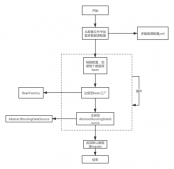Spring的缓存机制非常灵活,可以对容器中任意Bean或者Bean的方法进行缓存,因此这种缓存机制可以在JavaEE应用的任何层次上进行缓存。
Spring缓存底层也是需要借助其他缓存工具来实现,例如EhCache(Hibernate缓存工具),上层则以统一API编程。
要使用Spring缓存,需要以下三步
- 1.向Spring配置文件导入context:命名空间
- 2.在Spring配置文件启用缓存,具体是添加 <cache:annotation-driven cache-manager="缓存管理器ID" />
- 3.配置缓存管理器,不同的缓存实现配置不同,如果是EhCache,需要先配置一个ehcache.xml
例如
|
1
2
3
4
5
6
7
8
9
10
11
12
13
14
15
16
17
18
19
20
|
<?xml version="1.0" encoding="UTF-8"?><ehcache> <diskStore path="java.io.tmpdir" /> <!-- 配置默认的缓存区 --> <defaultCache maxElementsInMemory="10000" eternal="false" timeToIdleSeconds="120" timeToLiveSeconds="120" maxElementsOnDisk="10000000" diskExpiryThreadIntervalSeconds="120" memoryStoreEvictionPolicy="LRU"/> <!-- 配置名为users的缓存区 --> <cache name="users" maxElementsInMemory="10000" eternal="false" overflowToDisk="true" timeToIdleSeconds="300" timeToLiveSeconds="600" /></ehcache> |
上面的ehcache.xml配置了两个缓存区,Spring中的Bean将会缓存在这些缓存区中,一般的,Spring容器中有多少个Bean,就会在ehcache中定义多少个缓存区。
接着在Spring配置文件中配置缓存管理器如下,其中第一个Bean是一个工厂Bean,用来配置EhCache的CacheManager, 第二个Bean才是为Spring缓存配置的缓存管理器,所以将第一个Bean注入第二个Bean。
|
1
2
3
4
5
6
7
8
9
10
11
12
13
14
|
<cache:annotation-driven cache-manager="cacheManager" /> <!-- 配置EhCache的CacheManager 通过configLocation指定ehcache.xml文件的位置 --> <bean id="ehCacheManager" class="org.springframework.cache.ehcache.EhCacheManagerFactoryBean" p:configLocation="classpath:ehcache.xml" p:shared="false" /> <!-- 配置基于EhCache的缓存管理器 并将EhCache的CacheManager注入该缓存管理器Bean --> <bean id="cacheManager" class="org.springframework.cache.ehcache.EhCacheCacheManager" p:cacheManager-ref="ehCacheManager" > </bean> |
下面是一个完整的Spring配置,
|
1
2
3
4
5
6
7
8
9
10
11
12
13
14
15
16
17
18
19
20
21
22
23
24
25
26
27
28
29
30
31
32
|
<?xml version="1.0" encoding="UTF-8"?><beans xmlns="http://www.springframework.org/schema/beans" xmlns:xsi="http://www.w3.org/2001/XMLSchema-instance" xmlns:p="http://www.springframework.org/schema/p" xmlns:cache="http://www.springframework.org/schema/cache" xmlns:context="http://www.springframework.org/schema/context" xsi:schemaLocation="http://www.springframework.org/schema/beans http://www.springframework.org/schema/beans/spring-beans-4.0.xsd http://www.springframework.org/schema/cache http://www.springframework.org/schema/cache/spring-cache-4.0.xsd http://www.springframework.org/schema/context http://www.springframework.org/schema/context/spring-context-4.0.xsd"> <context:component-scan base-package="com.service"/> <cache:annotation-driven cache-manager="cacheManager" /> <!-- 配置EhCache的CacheManager 通过configLocation指定ehcache.xml文件的位置 --> <bean id="ehCacheManager" class="org.springframework.cache.ehcache.EhCacheManagerFactoryBean" p:configLocation="classpath:ehcache.xml" p:shared="false" /> <!-- 配置基于EhCache的缓存管理器 并将EhCache的CacheManager注入该缓存管理器Bean --> <bean id="cacheManager" class="org.springframework.cache.ehcache.EhCacheCacheManager" p:cacheManager-ref="ehCacheManager" > </bean> </beans> |
下面将以@Cacheable为例,演示Spring基于EhCache缓存的用法。 Cacheable用于修饰类或者方法,如果修饰类,则类中所有方法都会被缓存。
类级别的缓存
例如有如下Bean类,
|
1
2
3
4
5
6
7
8
9
10
11
12
13
14
15
16
|
@Service("userService")@Cacheable(value="users")public class UserServiceImpl implements UserService { @Override public User getUsersByNameAndAge(String name, int age) { System.out.println("正在执行getUsersByNameAndAge().."); return new User(name,age); } @Override public User getAnotherUser(String name, int age) { System.out.println("正在执行getAnotherUser().."); return new User(name,age); }} |
基于类的缓存,将会缓存类中的所有方法,缓存之后,程序调用该类实例的任何方法,只要传入的参数相同,Spring将不会真正执行该方法,而是直接根据传入的参数去查找缓存中的数据!
比如像下面这样使用缓存数据,
|
1
2
3
4
5
6
7
8
9
|
public static void test2() { ApplicationContext ctx = new ClassPathXmlApplicationContext("beans.xml"); UserService us = ctx.getBean("userService", UserService.class); User u1 = us.getUsersByNameAndAge("张三", 50); //由于第二次调用userService方法时,使用了相同参数,那么真正的方法将不会执行, //Spring将直接从缓存按参数查找数据 User u2 = us.getAnotherUser("张三", 50); System.out.println(u1==u2); } |
输出结果,
正在执行getUsersByNameAndAge()..
true
可以看到,上面的getAnotherUser()并没有真正执行,因为传入的参数与之前的方法传入的参数相同,于是Spring直接从缓存区数据了。
上面的Bean类中的注解@Cacheable除了必选属性value之外,还有key, condition,, unless属性,后面三个都是用来设置Spring存储策略,对于基于类的缓存来说,Spring默认以方法传入的参数作为key去缓存中查找结果。
当然我们也可以修改key的策略,让Spring按照其他标准,比如按照第一个参数是否相同来作为key,在缓存中查找结果。
将上面的Bean类修改如下,
|
1
2
3
4
5
6
|
@Service("userService")@Cacheable(value="users", key="#name")public class UserServiceImpl implements UserService { @Override public User getUsersByNameAndAge(String name, int age) { |
意味着我们传入相同的name,Spring就不会真正执行方法。只有name不同的时候,方法才会真正执行,例如下面,
|
1
2
3
4
5
6
7
8
|
public static void test2() { ApplicationContext ctx = new ClassPathXmlApplicationContext("beans.xml"); UserService us = ctx.getBean("userService", UserService.class); User u1 = us.getUsersByNameAndAge("张三", 50); //将@Cacheable的key参数改为key="#name"之后,下面的方法将可以执行。 User u2 = us.getAnotherUser("李四", 50); System.out.println(u1==u2); } |
可以看到这回getAnotherUser()方法得到执行了,
1 正在执行getUsersByNameAndAge()..
2 正在执行getAnotherUser()..
3 false
我们也可以设置condition属性,例如,
|
1
2
3
4
5
6
|
@Service("userService")@Cacheable(value="users", condition="#age<100")public class UserServiceImpl implements UserService { @Override public User getUsersByNameAndAge(String name, int age) { |
那么对于下面的代码来说,两个方法都不会被缓存,Spring每次都是执行真正的方法取结果,
|
1
2
3
4
5
6
7
|
public static void test2() { ApplicationContext ctx = new ClassPathXmlApplicationContext("beans.xml"); UserService us = ctx.getBean("userService", UserService.class); User u1 = us.getUsersByNameAndAge("张三", 500); User u2 = us.getAnotherUser("李四", 500); System.out.println(u1==u2); } |
执行结果,
正在执行getUsersByNameAndAge()..
正在执行getAnotherUser()..
false
方法级别的缓存
方法级别的缓存则只会对方法起作用了,不同的方法可以设置不用的缓存区,例如下面这样,
|
1
2
3
4
5
6
7
8
9
10
11
12
13
14
15
16
17
|
@Service("userService")public class UserServiceImpl implements UserService { @Cacheable("users1") @Override public User getUsersByNameAndAge(String name, int age) { System.out.println("正在执行getUsersByNameAndAge().."); return new User(name,age); } @Cacheable("users2") @Override public User getAnotherUser(String name, int age) { System.out.println("正在执行getAnotherUser().."); return new User(name,age); }} |
使用下面的测试代码,
|
1
2
3
4
5
6
7
8
9
10
11
12
|
public static void test2() { ApplicationContext ctx = new ClassPathXmlApplicationContext("beans.xml"); UserService us = ctx.getBean("userService", UserService.class); //第一次执行方法,方法将会真正执行并缓存 User u1 = us.getUsersByNameAndAge("张三", 500); //虽然下面方法传入相同参数,但是因为这两个方法在不同的缓存区,所以无法使用缓存数据 User u2 = us.getAnotherUser("张三", 500); System.out.println(u1==u2); //上面已经缓存过,这里不会真正执行,直接使用缓存 User u3 = us.getAnotherUser("张三", 500); System.out.println(u3==u2); } |
执行结果,
正在执行getUsersByNameAndAge()..
正在执行getAnotherUser()..
false
true
使用@CacheEvict清除缓存
被@CacheEvict修饰的方法可以用来清除缓存,使用@CacheEvict可以指定如下属性。
allEntries, 是否清空整个缓存区
beforeInvocation: 是否在执行方法之前清除缓存。默认是方法执行成功之后才清除。
condiition以及key, 与@Cacheable中一样的含义。
下面示范简单用啊,
|
1
2
3
4
5
6
7
8
9
10
11
12
13
14
15
16
17
18
19
20
21
22
23
24
|
@Service("userService")@Cacheable("users")public class UserServiceImpl implements UserService { @Override public User getUsersByNameAndAge(String name, int age) { System.out.println("正在执行getUsersByNameAndAge().."); return new User(name,age); } @Override public User getAnotherUser(String name, int age) { System.out.println("正在执行getAnotherUser().."); return new User(name,age); } //指定根据name,age参数清楚缓存 @CacheEvict(value="users") public void evictUser(String name, int age) { System.out.println("--正在清空"+name+","+age+"对应的缓存--"); } //指定清除user缓存区所有缓存的数据 @CacheEvict(value="users", allEntries=true) public void evictAll() { System.out.println("--正在清空整个缓存--"); }} |
下面是测试类,
|
1
2
3
4
5
6
7
8
9
10
11
12
13
14
15
16
17
18
19
20
21
22
|
public static void test2() { ApplicationContext ctx = new ClassPathXmlApplicationContext("beans.xml"); UserService us = ctx.getBean("userService", UserService.class); //系统会缓存两个方法 User u1 = us.getUsersByNameAndAge("张三", 500); User u2 = us.getAnotherUser("李四",400); //调用evictUser()方法清除缓冲区指定的数据 us.evictUser("李四", 400); //前面清除了 李四, 400 的缓存,下面的方法返回的数据将会再次被缓存 User u3 = us.getAnotherUser("李四", 400); System.out.println(us == u3); //false //前面已经缓存了 张三, 500的数据,下面方法不会重新执行,直接取缓存中的数据 User u4 = us.getAnotherUser("张三", 500); System.out.println(u1==u4); //输出true //清空整个缓存 us.evictAll(); //由于整个缓存都已经被清空,下面的代码都会被重新执行 User u5 = us.getAnotherUser("张三", 500); User u6 = us.getAnotherUser("李四", 400); System.out.println(u1==u5); //输出false System.out.println(u3==u6); //输出false } |
执行结果,
正在执行getUsersByNameAndAge()..
正在执行getAnotherUser()..
--正在清空李四,400对应的缓存--
正在执行getAnotherUser()..
false
true
--正在清空整个缓存--
正在执行getAnotherUser()..
正在执行getAnotherUser()..
false
false
总结
以上就是本文关于Spring缓存机制实例代码的全部内容,希望对大家有所帮助。感兴趣的朋友可以继续参阅本站其他相关专题,如有不足之处,欢迎留言指出。感谢朋友们对本站的支持!
原文链接:http://www.cnblogs.com/fysola/p/6378400.html












